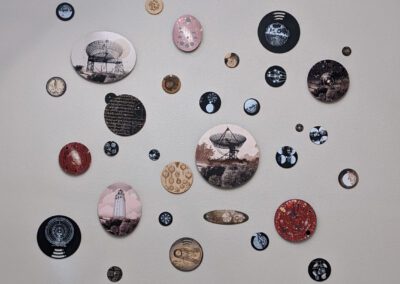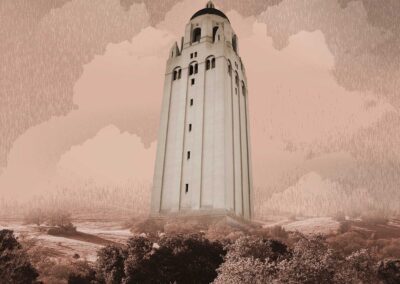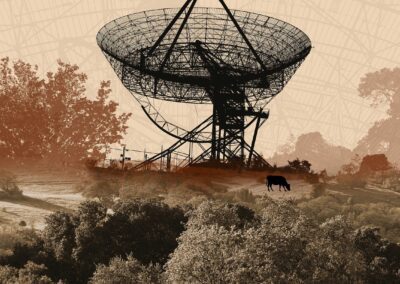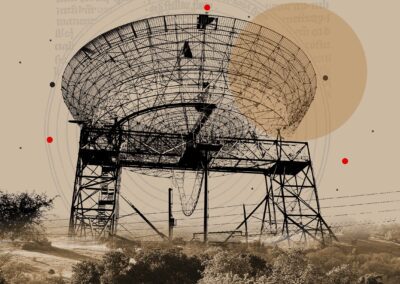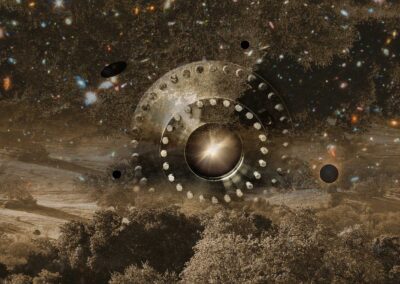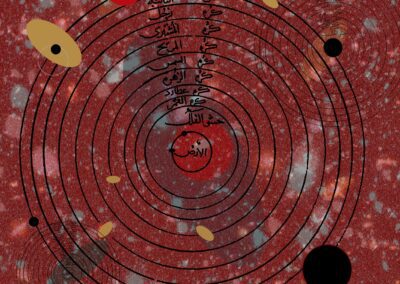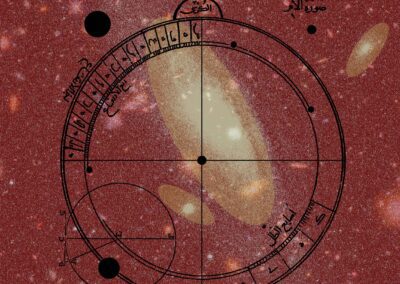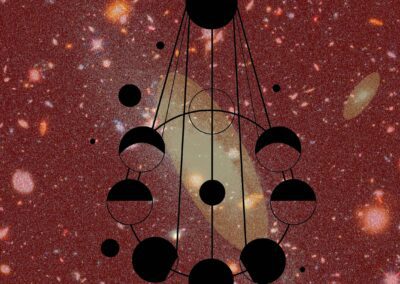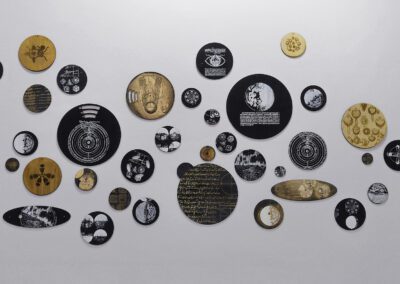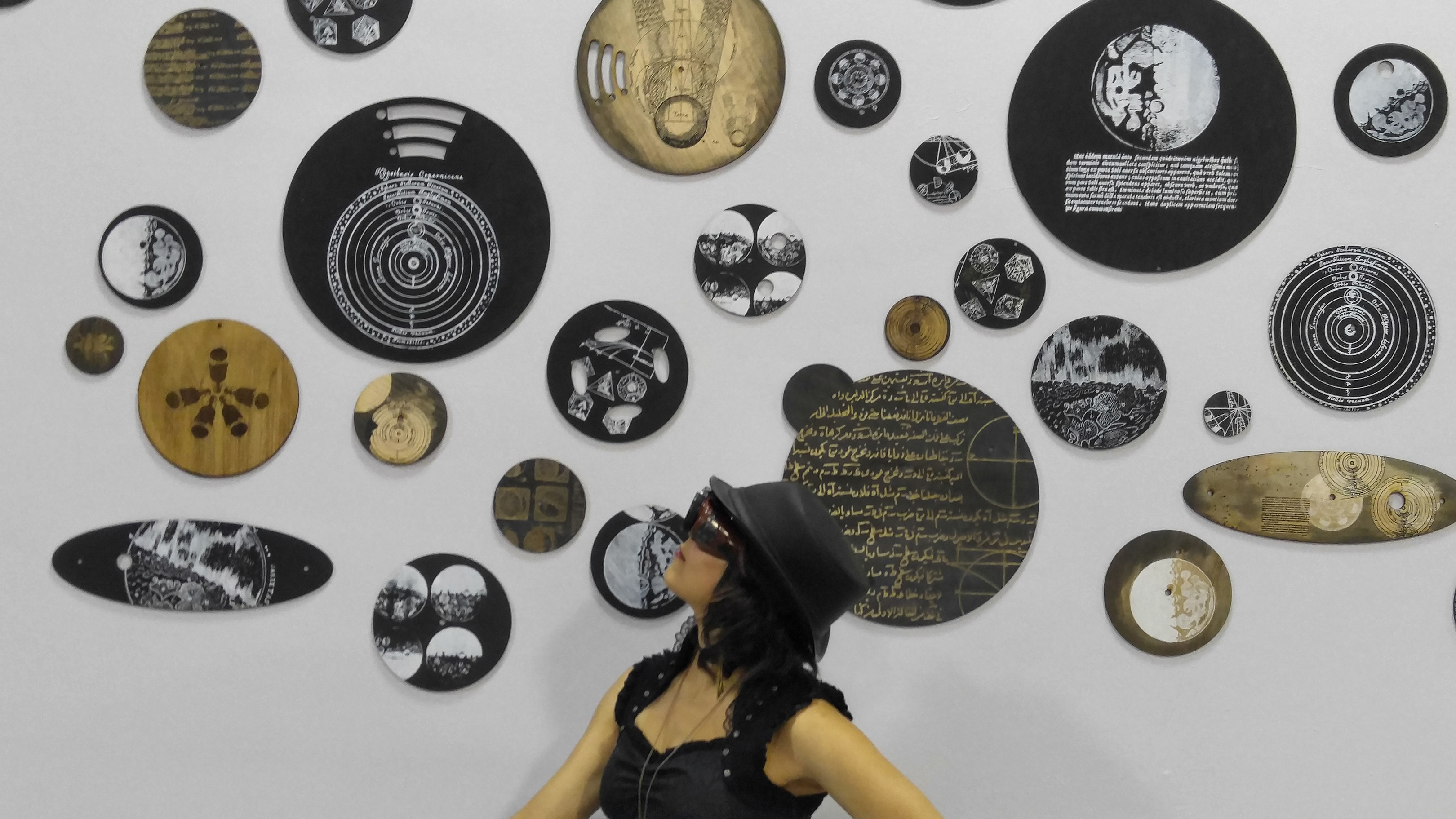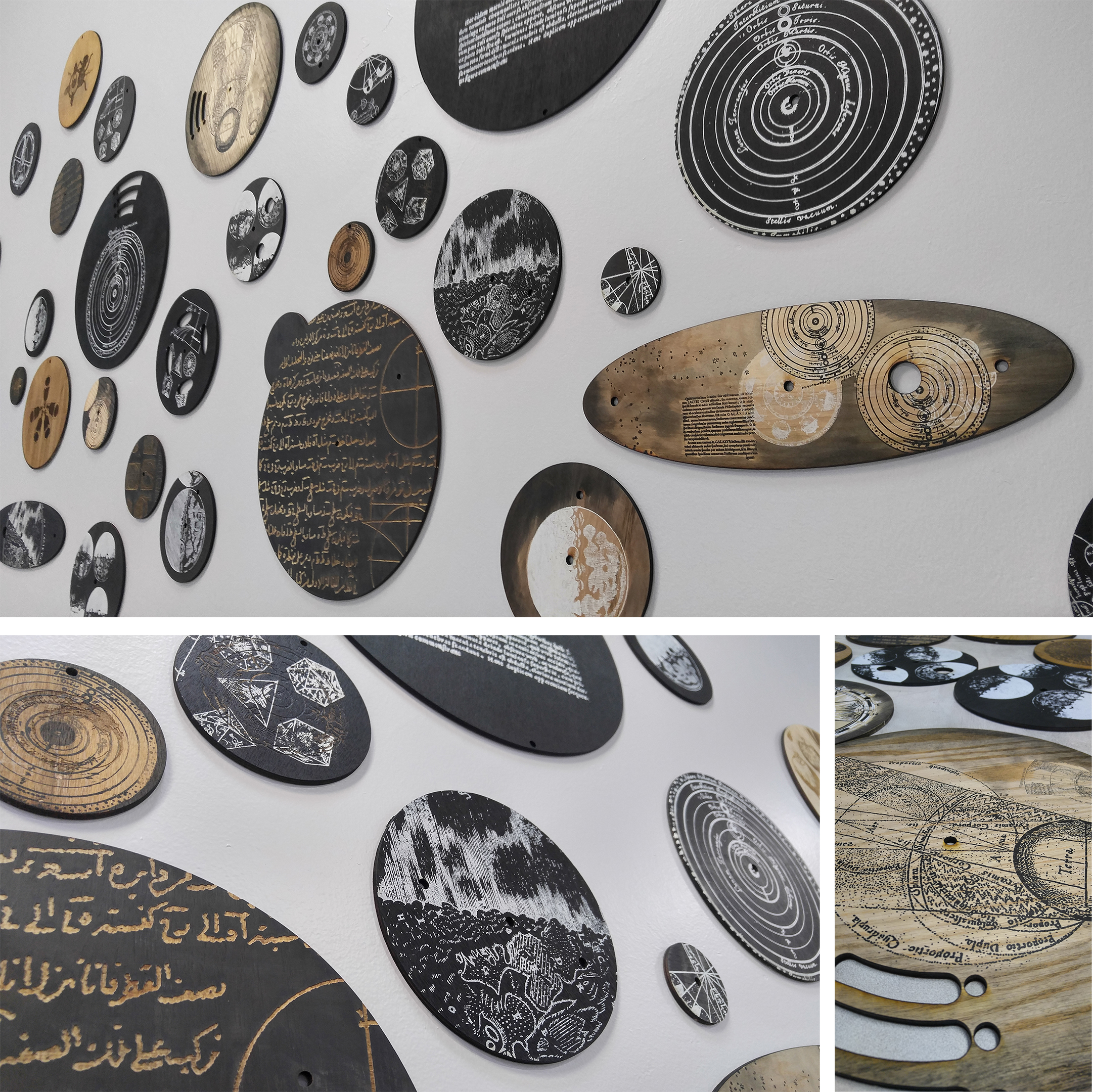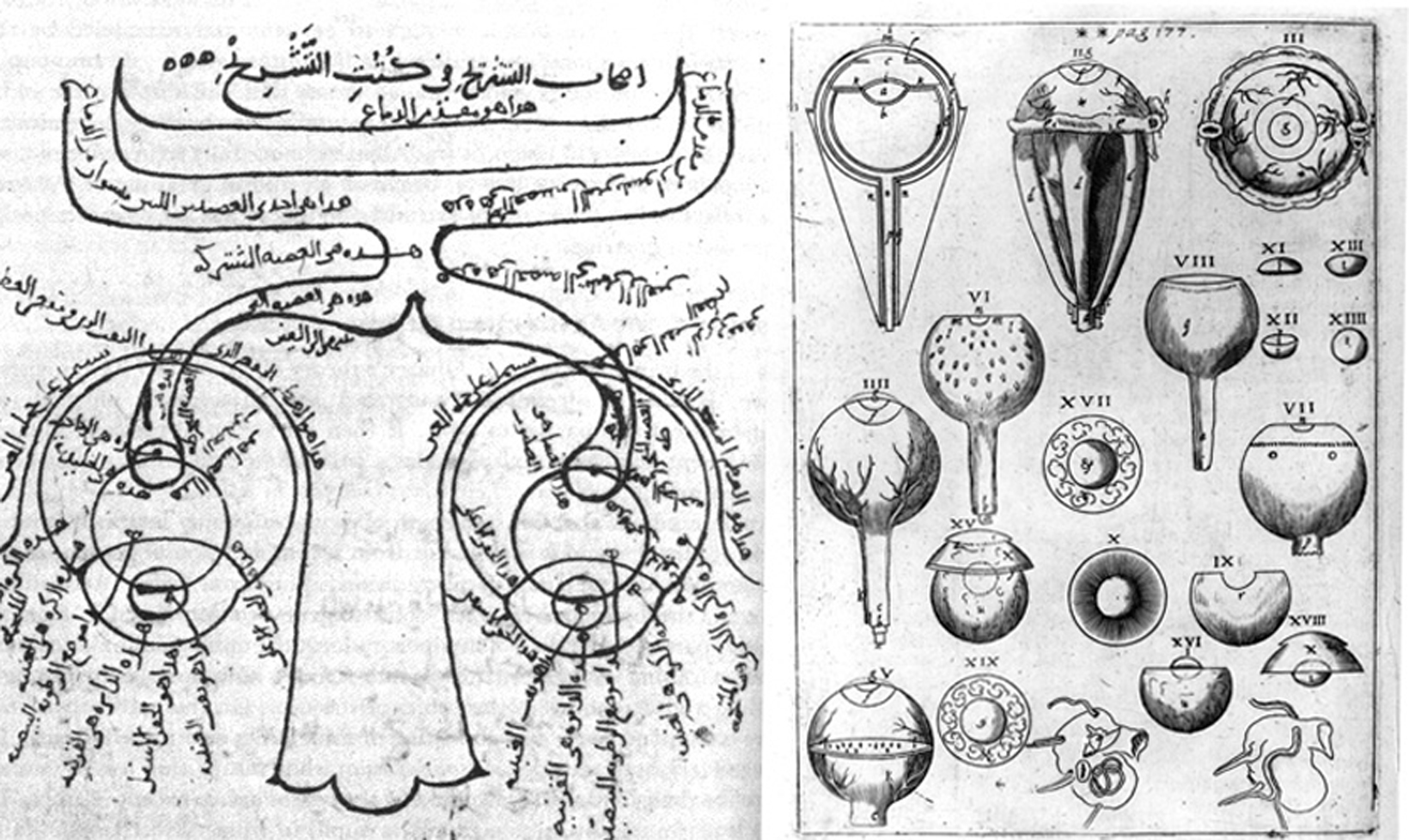Sidereal Messenger, Stanford University, 2022
Site-specific commissioned installation
Sidereal Messenger, named after Galileo’s 1610 astronomical treatise, displays a constellation of wooden circles with textual and visual diagrams in the fields of optics and astronomy by Kepler, Tusi, Biruni, Hunain b. Ishaq, Copernicus, and Galileo among others. The commissioned installation by Stanford University, with the theme of Research, combines twenty-five wooden circles (2017) with seven illustrative aluminum pieces (2022) which reference Stanford University’s landmarks and fields of research in astrophysics and cosmology. These new images include the Dish, SLAC, and Hoover tower. The piece was installed in May 2022 at Graduate Residences, Building B, on the Stanford University campus.
Sidereal Messenger, NASA Ames, 2017
Sidereal Messenger is an installation of circle wood panels that form a constellation on the wall. The circles display textual and visual information on medieval and early modern optics and astronomy. The diagrams include those by Kepler, Tusi, Hunain b. Ishaq, the model of the cosmos by Copernicus, and the observation of the Moon by Galileo through his telescope. The overall color palette is inspired by a 2014 Hubble image of the universe.
I created this piece as a site-specific installation for Singularity University’s event at NASA Ames Research Center in 2017.
Research
“Alhazen’s most famous work is his seven-volume treatise on optics Kitab al-Manazir (Book of Optics), written from 1011 to 1021. Alhazen studied the process of sight, the structure of the eye, image formation in the eye, and the visual system. Alhazen’s Book of Optics influenced the Perspectivists in Europe, Roger Bacon, Witelo, and Peckham. The Optics was incorporated into Risner’s 1572 printing of Opticae Thesaurus, through which Kepler finally resolved the contradictions inherent in a Ptolemaic explanation of the imaging chain, from the external object to the retina of the eye”

